Reimagining Thunderbirds without puppets and with CG was always going to be a tough task. But production companies ITV Studios and Pukeko Pictures have, in the new Thunderbirds Are Go, sought to capture the essence of the original 1960s series by incorporating live action miniature sets into the fold – built by Weta Workshop no less. Added to that were practical elements such as water, smoke and dust that would help integrate the sets with CG characters and vehicles. We find out from the team behind the show how it was all made.
Planning and previs
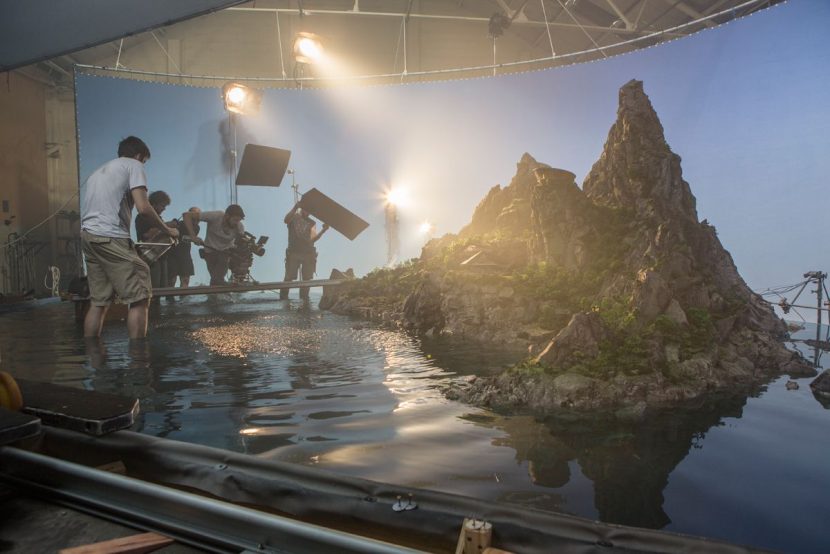
Since the show is achieved with a combination of live action models and CGI, one of the early considerations in making Thunderbirds Are Go involved breaking down how shots and sequences would be achieved. “We went through the scripts and decided what sort of action a set needed to do,” explains production designer Ben Milsom. “From that we decided what should be a miniature and what should be digital. Most exteriors, especially organic environments, were done as a scale miniature – because you got a huge amount of detail out of them. The miniature would always read so well as a physical model, whereas the CG world was used in better areas such as interiors, vehicles and characters.”
“Whether it was a miniature or CG,” adds Milsom, “it was always trying to maintain a style and an aesthetic regardless of whether it was CG or miniature. Then we’d tie the two together as well as we could.”
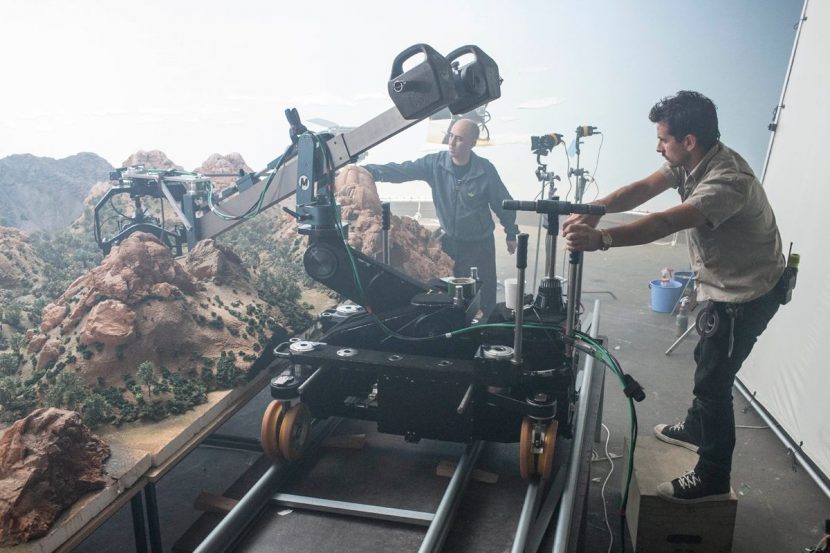
Weta Workshop, which built the miniature sets, contributed 2D artwork and concept designs for the environments and crafts. Milsom oversaw further concept design and artwork that then moved into a rough CG modeling phase, led by models and assets supervisor Sven Trotter. “I’d then take a CG model to one of my artists and we’d do a paint over and do a keyframe,” says Milsom, “and put it into an environment that’s telling the story of that episode – so you’re seeing that craft doing what it’s supposed to be doing.”
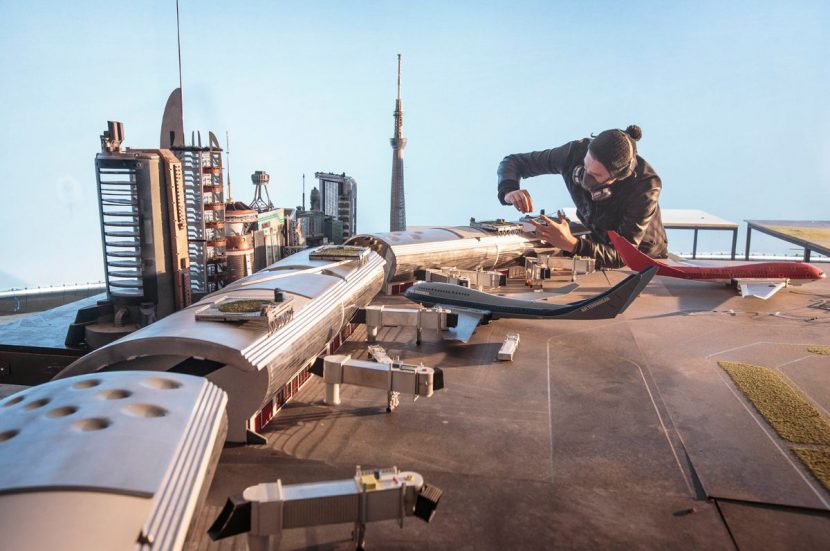
Similarly, maquettes for the miniature sets would be constructed to rough out the final look and those would also be turned into CG previs versions, allowing artists to work out camera moves and also decide on what scale the final sets should be built. “All the assets are created in the previs world, then the episode is previs’d with exactly the right dimensions so we know all the shots are achievable,” explains Milsom. “That previs or miniature is placed into the correct shooting stage so we know exactly where it’s going to sit on the shooting stage and how it’s going to be shot and where the camera will be placed. It’s almost like a virtual rehearsal.”
Making miniatures
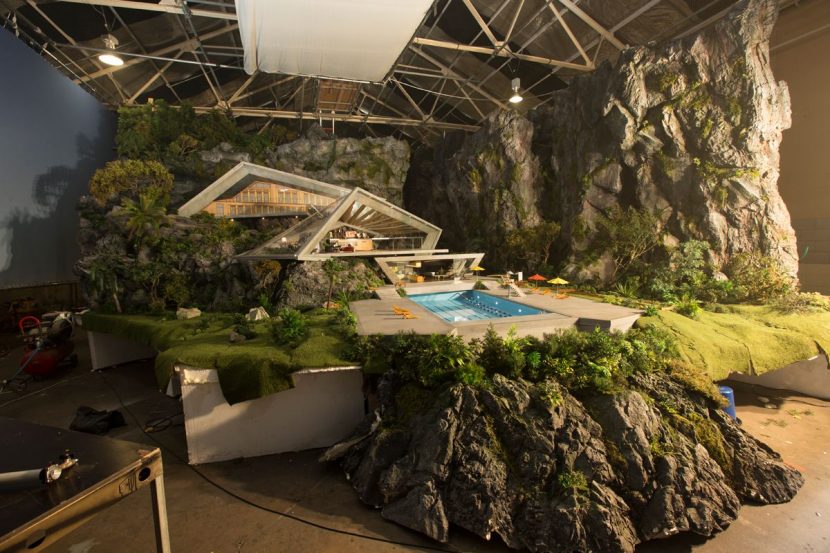
From the maquettes, Milsom would then put together a briefing package for Weta Workshop. “I’d give them my maquette, the dimensions of the set, the previs shots, tons of reference, so say we were building a landing strip in the desert I’d find photographs, the type of sand and everything they needed.”
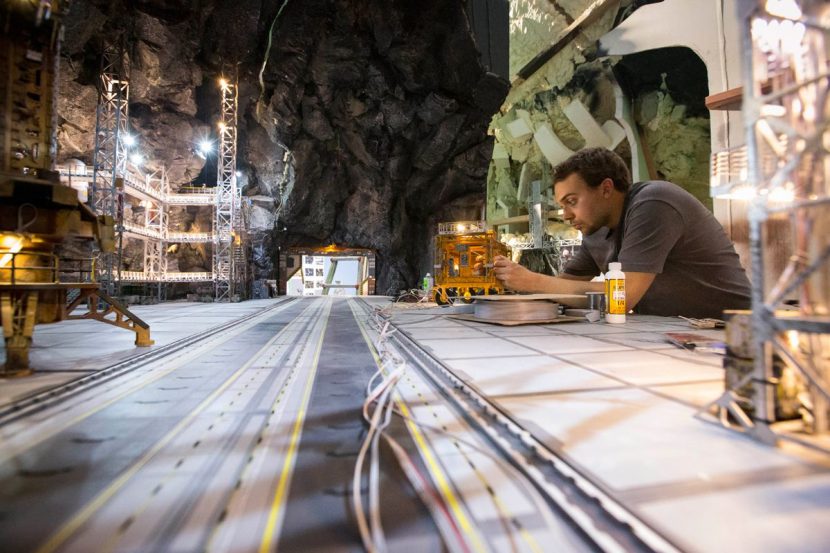
Some of the most significant Weta miniatures included Tracy Island, hangar areas and an underwater sea lab that required remote control. Tracy Island, for example, was built at twelfth scale and was surrounded by real water. “It was the very first miniature we filmed,” notes Milsom. “We finished the island and then we built a huge tank around the island for the site with an infinity edge, so the water was constantly overflowing and they were pumping that into the tank, so that you got that horizon beyond the island. Considering the size of our stage, we did pretty well to achieve that edge.”
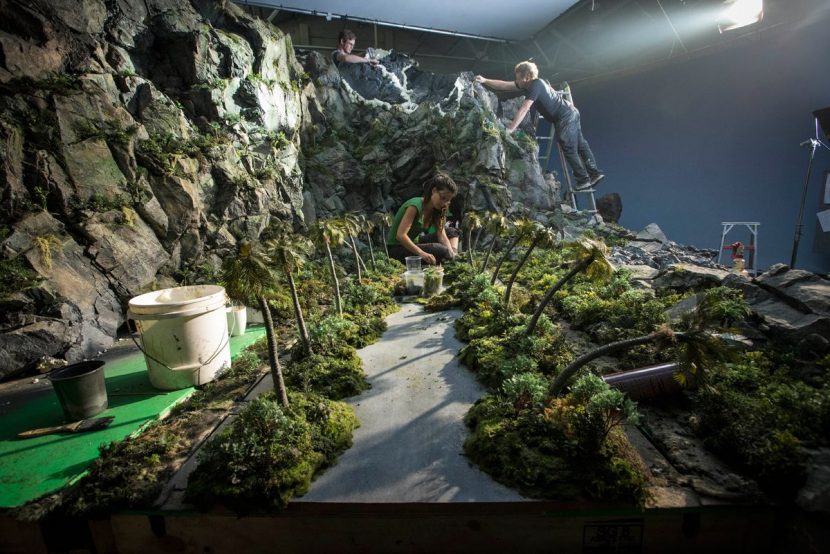
The undersea lab – seen in the show’s first episode – involved a large rocky environment to depict a deep trench in the ocean, plus a remote controlled miniature. “It was a really cool miniature,” relates Milsom. “It was almost like a prawn with a big facility in its head, and it’s got six legs and slowly crawls across the deepest parts of the trench taking samples. We built this model and we could puppeteer it with wires and cables. We shot it against a blackened corner of the studio and when we shoot underwater sequences we pump huge amounts of ambient haze into the studio, and that gives it that realistic depth of field that creates the illusion of being underwater. It was also shot at at least 100 fps.”
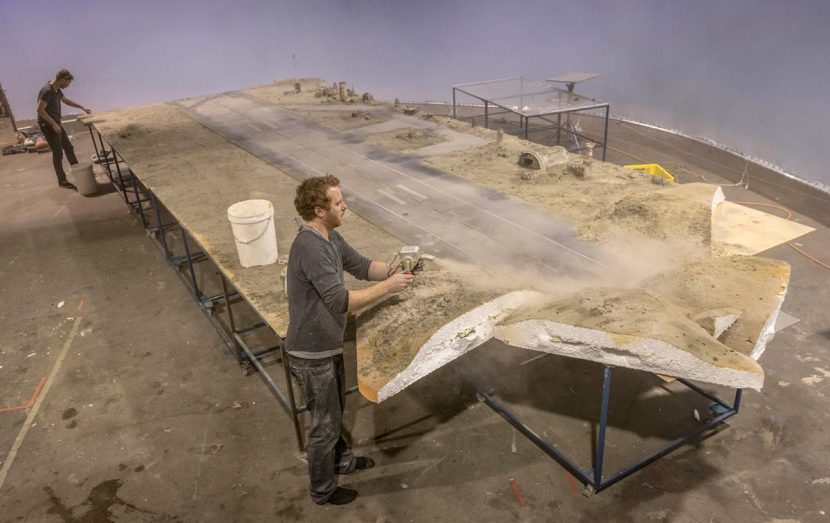
During filming of the miniatures – done with RED EPICS – the sets would be 3D scanned, which would later help facilitate tracking for interaction with CG characters or vehicles. The shoot also involved the capturing of practical elements. “One day we took the whole Tracy Island out and filmed water elements in the tank,” says Milsom. “This was for shots like the thrusters going across the water. We also put up a black one day and shot huge puffs of dust or flame balls or snow falling. And we even used an oxycetelne torch that would become the engine exhaust for one of the Thunderbird crafts.”
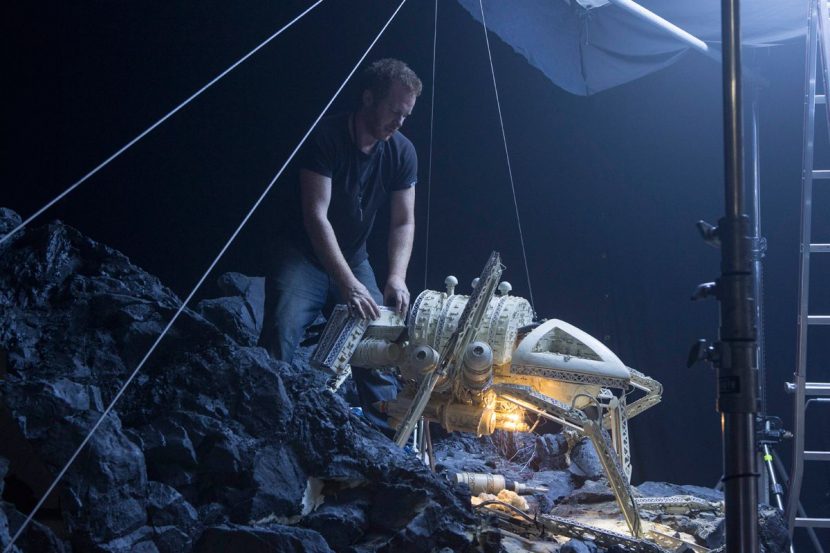
Moving into CG
Once the shoot for an episode was complete, the best plates would be chosen, tracked and then go into another round of previs. “Here we add characters and vehicles to the plates that have miniatures,” states Trotter. “We further the animation, tighten it up, add camera shake et cetera to help tie the CG shots with miniatures.”
The CG characters, while not exhibiting marionette-like performances, still featured attributes that were a throw-back to the original Thunderbirds. “We referenced the original series for the materials they used for the characters and crafts,” says Trotter. “We had oversized cloth patterns and stitching and we exaggerated the bump on them – we had an egg shell bump. We had pretty expressive rigs but we had to get through facial animation quite quickly, so we decided to go with not quite open and closed mouths. And occasionally we’d move the characters in a string puppet way – but only every now and then.”
Modeling took place most in Maya, with some Zbrush sculpting, and Photoshop and MARI used for texturing. Final animation and rendering was handled by CGCG in Taiwan, while Milk VFX took care of compositing and some fully CG vehicle shots. Even then, hand-crafted elements still made up the ultimate look for the CG assets. “For the vehicles,” notes Trotter, “we had Weta Workshop physically paint onto our UVs, then we scanned those in and wrapped them back onto our CG models.”
Compositing is go
Milk VFX created a pipeline to deal with compositing the show, which weighed in at around 400 shots per episode. “Milk’s brief also includes the look development, creation and enhancement of key environments integral to the story including underwater, space and storm scenes,” explains Sara Bennett, Milk’s Head of 2D and VFX Supervisor on Thunderbirds Are Go. “We are also lighting the CG vehicles to help ease the workflow between companies.”
With so many shots to get through, Milk developed a pipeline for the work, managed with Shotgun. “From an artist’s point of view,” relates Bennett, “we knew we had to get through a certain amount of shots per day with a small team to hit the deadline and the budget. So we set up some automated scripts to allow for a quicker turnaround, these included the hologram looks, 2D thrusters for vehicles that require them and a sky dome setup, which we use for all exterior shots throughout the series.”
“We worked closely with series director David Scott to get the finished look he was after for blending the live action and CG together seamlessly,” adds Bennett. “To achieve the seamless blend between the two different mediums we made sure we matched the plate photography when treating the CG, this included chromatic aberration, lens distortion and we also added depth of field to the CG to help give it a miniature feel. We then applied a heavy grain and vignettes to all shots including live action plates without any VFX in them, in order to keep the continuity throughout the show.”
A particularly challenging area of the work included the underwater sequences. Here Milk enhanced the Weta Workshop miniature photography. “In order to give movement, life and a realistic feel to the underwater environments,” notes Bennett, “we used NUKE’s Particle System to add layers of crud, which brought life and depth to sell the underwater feeling. We also used depth mattes to add in depth and density and finally heavy filters were added including chromatics and distortion effects.”
Another was the opening storm sequence from the first episode where Thunderbird 2 rescues some hot air balloonists. “The team used a mix of elements to achieve this,” says Bennett. “Working closely with David Scott we incorporated an element shoot which included various smoke plates for the storm effects and blended these with our own in-house elements. Another storm sequence in a later episode features a hurricane viewed from space, which required a digital matte painting to create the eye of the storm as a base layer onto which we applied the same technique of layering up smoke elements.”
Other Milk shots included holograms, set enhancements, sky domes and environment extensions. For the desert runway shots, visual effects artists matte painted in surrounding desert and further runway, as Bennett explains. “We also had to open up the runway miniature set to add in distance and scale, which is far simpler to do as a digital matte painting than trying to build something on set. Another example was Kayo parachuting in to confront The Hood in one episode, these shots were full CG when she is airborne but the camera POV is looking down to a desert landscape which needed to match live action plates later in the scene, so again this was for a few shots only and made more sense to create a bespoke matte painting that we used across the shots instead of creating something more costly in CG.”
Ultimately, the combination of CG with live action sets has given Thunderbirds Are Go a unique look. “We’re really hoping that people realize miniatures aren’t a thing of the past,” says Ben Milsom. “They still add such a huge amount of value to a show. As does CGI, but it doesn’t have to be one or the other.”

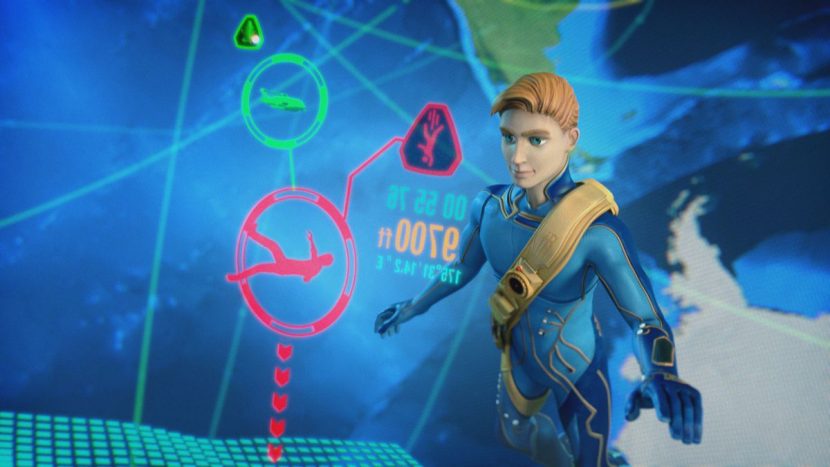
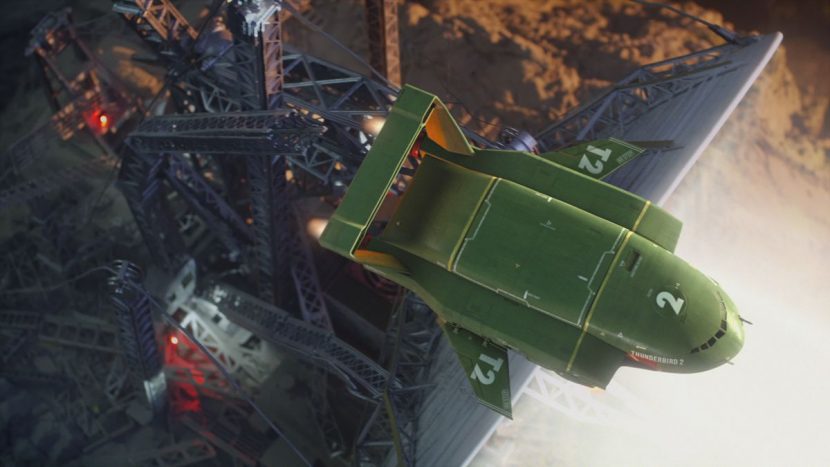
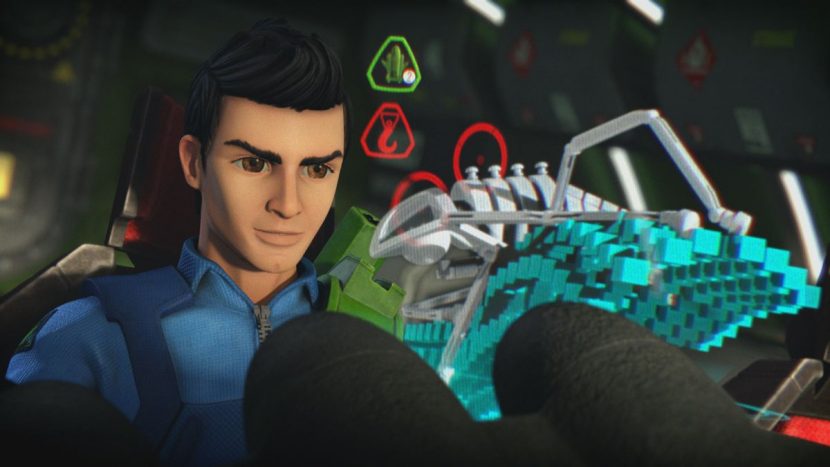
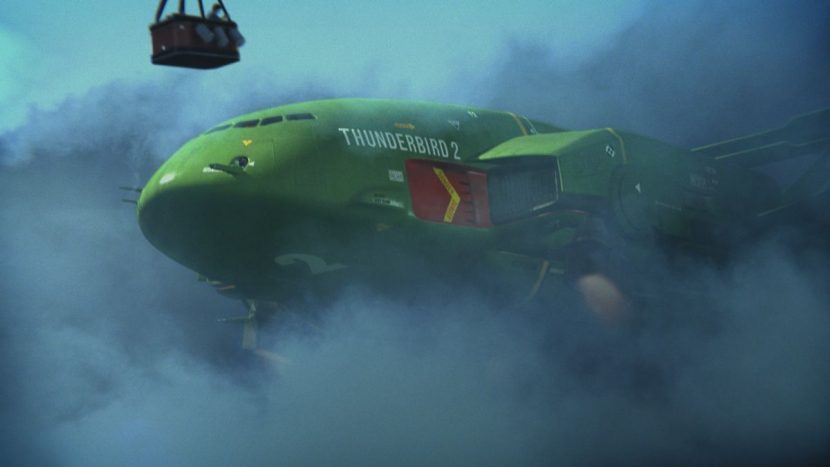
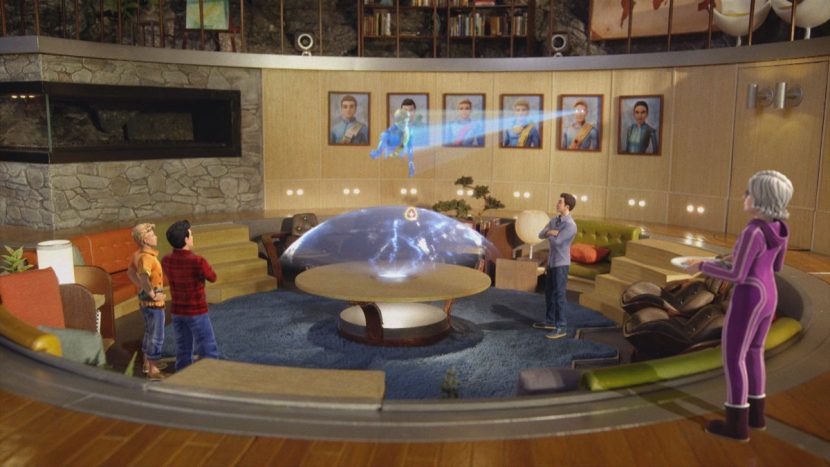
I wonder who’s bright idea it was to actually REDUCE the depth of field on the show… It sometimes looks like the ships are 6″ long??? I can’t believe Richard Taylor’s company would have built the HUGE Mansion for lady P. Was it an ITV decision??
My guess is they had some kid who is into the whole shallow DOF trend instead of someone who knows how to shoot models in charge.